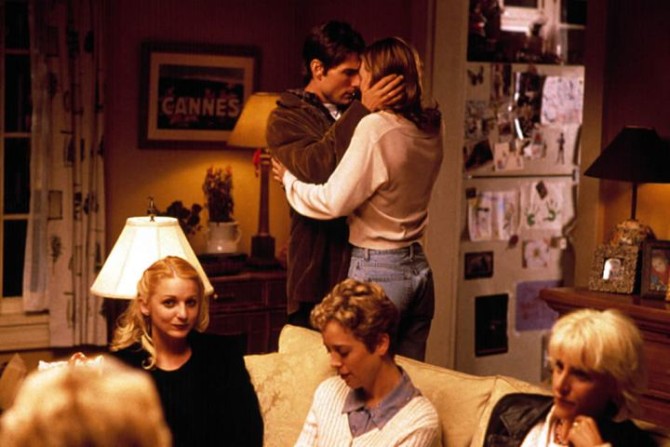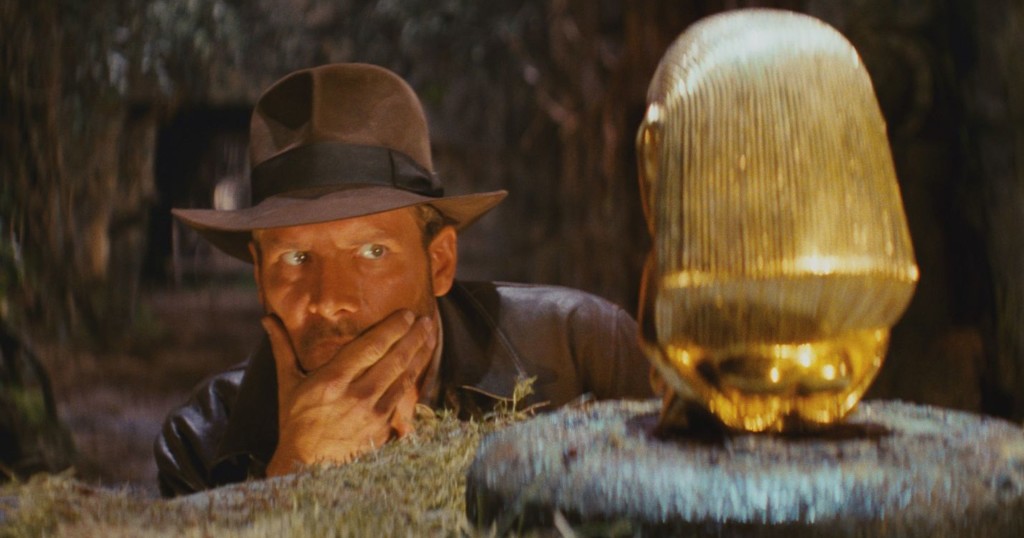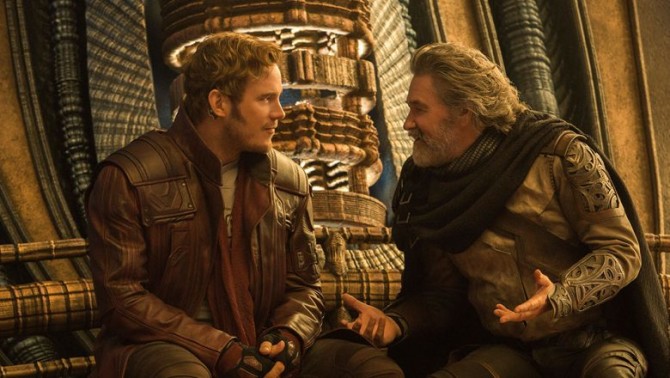I’ve been reading a lot of amateur scripts over the last few weeks and I continue to come across a troubling pattern. Boring scenes. I want to make something clear. You can be great with character. You can be great with dialogue. You can be great with structure. But if you don’t know what goes into writing an entertaining scene, none of that matters. After seeing this problem over and over again, I began to form a theory. I believe that one of the most well-known pieces of screenwriting advice – that you must move the story forward with every scene – has confused writers into believing that scenes are merely vehicles to get from point A to point B. Instead, you should be looking at scenes as their own individual movies. They must be entertaining in their own right. And as much as it can be done, they should have their own beginning, middle, and end.
The primary boring setup I encounter is the “talking heads in a room” scene. Whenever you have characters in a familiar generic room (living room, office, bedroom, kitchen, motel room) talking to one another, you should be worried. This is not an ideal setup for creating an entertaining scene. That doesn’t mean you can’t do it. Only that you are in danger of writing a boring scene. Why? Because you’re in a familiar setting and you’re depending on keeping the reader invested solely through your characters’ conversation. And if your storyline hasn’t pre-loaded this scene with drama, you’re stuck with two people droning on to each other.
Here’s the thing. These scenes are almost always the result of a faulty plot. If you’ve come up with a movie idea that doesn’t have momentum? That doesn’t force your character to go out into the world and do things? If your plot is passive or inert? Then chances are your characters are going to be sitting around in a lot of boring rooms talking to each other. And because there’s no engine driving your story, everybody’s going to be relaxed and talking about boring things. Let me ask you a question. How many familiar generic rooms was Indiana Jones in in Raiders of the Lost Ark? One? Two maybe? That’s because HE WAS TOO FREAKING BUSY TRYING TO FIND THE ARK OF THE COVENANT!
Don’t worry, don’t worry. I’m not saying you can only write entertaining scenes if you write action adventure movies. I’m just using that as example to explain that when you come up with a story that has a strong engine, that pushes your character to do things, there will be less instances where they’re sitting around.
Now the truth is, there will be scenes where your characters need to talk to each other in a boring room. In fact, there are some great scenes in cinema history that take place with two characters in a room. But not unless you know what you’re doing. And for that reason, I want to introduce a concept that will help you avoid this problem. It’s called SCENE TENSION. Whenever you write a scene, you want to ask where the tension is coming from. If there’s no tension, or the tension is weak, there’s a good chance you’re writing a boring scene.
Let me give you a basic example. A guy and a girl are discussing plans for the weekend. I wouldn’t want to write this scene regardless but let’s pretend, for whatever reason, that it’s necessary for the plot. If you were to write this scene in a living room with the two characters sitting down, it would be boring. To fix this, ask yourself where you can introduce some scene tension. What if the guy is late for a flight? He doesn’t have time to talk about this. He’s running around, feeling his pockets for his keys, checking his phone for his ticket. Meanwhile, this conversation is important to the girl and she’s trying to sort it out, but he can’t focus. This creates a natural conflict, which, in turn, makes the scene entertaining. I’m not saying this a great scene. But it’s magnitudes better than the first version.
Let’s look at another example. A mom is cooking breakfast for her children. I’ve read this scene hundreds of times. You can certainly write the scene so that the mom asks her kids how they’re doing. The kids ask for help on their homework. In other words, not a very interesting scene. However, if you look to add scene tension, maybe the mom just got a call in the previous scene from work, where it was revealed that they’re going to make layoffs today. Now the exact same scene involves an anxious mom who’s not paying attention to her kids cause she’s wondering if she’s going to get fired. Meanwhile, the kids are getting upset that their mom isn’t paying attention to them, and, as a result, the dialogue becomes more charged, more interesting.
Jerry Maguire is a master class in scene tension but look at the famous scene where Jerry Maguire comes to Dorthy’s house and tries to get her back. A writer could’ve very easily written a scene with Jerry and Dorothy alone in a room. But Cameron Crowe adds this divorce woman’s group – the worst possible people in the world to have around when you’re trying to get your wife back. The ultimate scene tension.
Or here’s one I saw the other day. A character was trying to have a conversation with someone else. But he kept getting important texts from someone, creating all sorts of tension in the scene. “Should we talk about this another time?” “No! No no no. I’m paying attention.” I’m not saying you always need a gimmick for a scene. Don’t let that be your takeaway from this article. I’m just using bigger examples to get my point across.
Actually, the most common way to add scene tension is through the characters themselves. You have a million options of who your character is in any moment. The most dangerous option you can go with is “fine.” If two characters in a scene are fine – if there is nothing bothering them, nothing eating at them, nothing pressuring them, nothing causing any level of unrest or anxiety, you are at risk of a scene heart attack. Actually, no. Heart attack implies it would be exciting. You are at risk of a scene coma. Which is why it’s critical you identify at least one character in the scene who’s exhibiting some level of unrest. That, then, will be the tension that keeps your scene entertaining.
I’ll give you a couple of examples. At work, a guy and a girl need to discuss relevant exposition that sets up important plot points later on. They go to the break room, maybe grab some chips from the vending machine, and chat away. Potential for a boring scene = high. IF, however, the guy has a secret crush on the girl, that “unrest” or “anxiety” adds tension to the scene. The exposition goes down a lot smoother because we’re focused on the subtext of the conversation.
And it can be even more subtle. Take Clarice’s first meeting with her boss, Jack Crawford, in Silence of the Lambs. That scene is a straight exposition scene, setting up Buffalo Bill, the serial killer. Now this isn’t the best example because a scene setting up a serial killer is kind of an interesting scenario. However, screenwriter Ted Tally still uses scene tension here. Clarice wants to impress her boss. She’s trying to prove that, even though she’s young and a woman, she’s worthy of this assignment. That “unrest” within Clarice creates the scene tension.
Let me now give you an example of a scene without scene tension. Guardians of the Galaxy 2. When Starlord meets Ego and Ego starts showing him around the planet, we get a very boring scene. The scene is exposition-driven but they forget to add any scene tension so the scene just drones on aimlessly as Ego explains tons of backstory and exposition to Starlord.
The reason writers screw this up so often is because they’re focused on getting the scene in their head down on the page, and as long as they’ve done that, they’re happy. For example, the plan might be to set up Character X in this scene. Or, like the Guardians example above, the plan might be to convey Relevant Exposition Y. They believe if they merely execute that plan, they’ve written a “successful” scene. And I can understand that. It is hard to write a scene where you get all the necessary exposition down in a way where it’s readable. But it’s only the beginning. You still have to entertain. Always. In every scene. Entertain. Never forget that.
And I want to finish off by reminding you that if you create plots with active heroes who go after things, you will encounter this problem way less. That’s because your hero is too busy to sit around in rooms chatting with people. He or she is out there trying to achieve their goal. But if you are writing a character piece, then you need to be an expert on scene tension. It’s gotta be in your writing DNA. Or else your script is DOA.




